Recent advances in the gold-catalyzed additions to C-C multiple bonds
- PMID: 21804887
- PMCID: PMC3135236
- DOI: 10.3762/bjoc.7.103
Recent advances in the gold-catalyzed additions to C-C multiple bonds
Abstract
C-O, C-N and C-C bonds are the most widespread types of bonds in nature, and are the cornerstone of most organic compounds, ranging from pharmaceuticals and agrochemicals to advanced materials and polymers. Cationic gold acts as a soft and carbophilic Lewis acid and is considered one of the most powerful activators of C-C multiple bonds. Consequently, gold-catalysis plays an important role in the development of new strategies to form these bonds in more convenient ways. In this review, we highlight recent advances in the gold-catalyzed chemistry of addition of X-H (X = O, N, C) bonds to C-C multiple bonds, tandem reactions, and asymmetric additions. This review covers gold-catalyzed organic reactions published from 2008 to the present.
Keywords: C−C multiple bonds; asymmetric addition; catalysis; gold; tandem reaction.
Figures













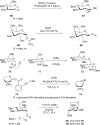



















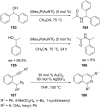




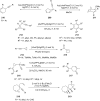















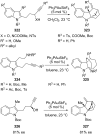
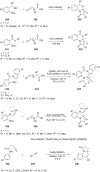
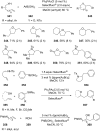




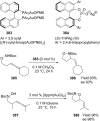






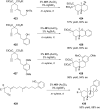


Similar articles
-
Transition-metal-catalyzed additions of C-H bonds to C-X (X = N, O) multiple bonds via C-H bond activation.Org Biomol Chem. 2013 Sep 14;11(34):5558-78. doi: 10.1039/c3ob40652k. Org Biomol Chem. 2013. PMID: 23851628 Review.
-
Enantioselective Carbonyl 1,2- or 1,4-Addition Reactions of Nucleophilic Silyl and Diazo Compounds Catalyzed by the Chiral Oxazaborolidinium Ion.Acc Chem Res. 2019 Aug 20;52(8):2349-2360. doi: 10.1021/acs.accounts.9b00279. Epub 2019 Jul 17. Acc Chem Res. 2019. PMID: 31314494
-
Tetracoordinate Boron Intermediates Enable Unconventional Transformations.Acc Chem Res. 2021 May 4;54(9):2298-2312. doi: 10.1021/acs.accounts.1c00132. Epub 2021 Apr 14. Acc Chem Res. 2021. PMID: 33852276
-
Copper-Catalyzed Radical Relay for Asymmetric Radical Transformations.Acc Chem Res. 2018 Sep 18;51(9):2036-2046. doi: 10.1021/acs.accounts.8b00265. Epub 2018 Sep 5. Acc Chem Res. 2018. PMID: 30183262
-
Recent advances in enantioselective gold catalysis.Chem Soc Rev. 2016 Aug 8;45(16):4567-89. doi: 10.1039/c5cs00929d. Chem Soc Rev. 2016. PMID: 26890605 Review.
Cited by
-
Green and Facile Assembly of Diverse Fused N-Heterocycles Using Gold-Catalyzed Cascade Reactions in Water.Molecules. 2019 Mar 11;24(5):988. doi: 10.3390/molecules24050988. Molecules. 2019. PMID: 30862100 Free PMC article.
-
1,2-N-migration in a gold-catalysed synthesis of functionalised indenes by the 1,1-carboalkoxylation of ynamides.Chemistry. 2014 Jun 10;20(24):7262-6. doi: 10.1002/chem.201403040. Epub 2014 May 14. Chemistry. 2014. PMID: 24828030 Free PMC article.
-
A Brief Survey of our Contribution to Stable Carbene Chemistry.Organometallics. 2011 Oct 24;30(20):5304-5313. doi: 10.1021/om200650x. Epub 2011 Sep 22. Organometallics. 2011. PMID: 22707843 Free PMC article.
-
Gold(I)-Catalyzed Direct Stereoselective Synthesis of Deoxyglycosides from Glycals.J Am Chem Soc. 2017 Oct 11;139(40):14041-14044. doi: 10.1021/jacs.7b08898. Epub 2017 Sep 28. J Am Chem Soc. 2017. PMID: 28934850 Free PMC article.
-
Gold-Catalyzed Synthesis of Small Rings.Chem Rev. 2021 Jul 28;121(14):8613-8684. doi: 10.1021/acs.chemrev.0c00697. Epub 2020 Nov 2. Chem Rev. 2021. PMID: 33136374 Free PMC article.
References
-
- Hashmi A S K, Bührle M. Aldrichimica Acta. 2010;43:27–33.
-
- Patil N T, Yamamoto Y. ARKIVOC. 2007;(v):6–19.
-
- Hashmi A S K. Pure Appl Chem. 2010;82:657–668. doi: 10.1351/Pac-Con-09-10-17. - DOI
LinkOut - more resources
Full Text Sources
